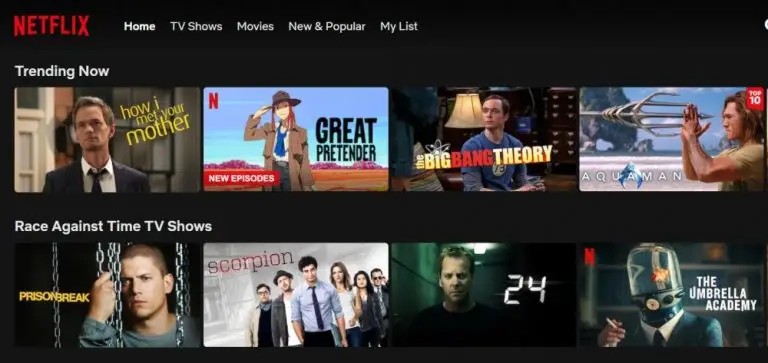Often businesses think that customer experience (CX) is something trivial and easy to manage. However, the idea they miss is to make the customers happy. But then, it is far more complex than thought earlier.
One study says that 32% of people will leave the brand after a single bad customer experience?
It is actually a structured process that is deeply linked with the customer expectations of the digital world.
Companies have failed to notice the difference between digitalization as a need and digitalization as a great and satisfying customer experience.
Let’s have a look into it further.
Page Contents
What is Customer Experience (CX)?
The customer experience (CX) relates to a business and how it engages with its customers at every point of its journey. That is from marketing and pre-sales to post-sale customer service, and everywhere.
Simply put, it is the sum total of all of the interactions with the brand and the customer.
Customer experience is not to be misunderstood by a simple set of actions that we take for our customers. Rather it focuses on “feelings”.
It is about customers’ or prospects’ feel about the brand. At every touchpoint, a brand can enhance or damage the intended feel.
So it is important to set things up beforehand. The decisions we make at each touchpoint influence how successful the business is going to be.
Customer Experience definition
The customer experience (CX) is the sum of impressions associated with a brand for a particular customer. It is built over different stages of the customer journey and encompasses all interactions. It may include both positive and negative feelings, incidents, and expectations.
Customer experience is strongly linked with such aspects as – Convenience, Responsiveness, Speed, Quality, Aesthetics, Pleasure
Importance of Customer Experience
The products these days have become a commodity. Customers are left with no option than to differentiate those products based on experiences they had.
Customers want to feel connected to their favorite brands, hence they want the companies to listen to them. CX is increasingly becoming the competitive differentiator. So businesses need to ensure that their CX strategies can deliver personalized and pleasing interactions at every touchpoint.
Below are some factors to make a positive CX impact.
If our marketing campaigns are in line with customers’ wants and needs?
We have a website, but is the navigation easy? Will it guide and assist visitors during the process?
Is my customer data accessible to the concerned people? Or do customers have to update their details to everyone or explain every conversation they have had?
To the extent which the organization understands their customers and customers also feel the same way has a powerful influence on the satisfaction level.
Gartner says, 89% of companies surveyed consider customer experience to be the new competitive battlefield.
What is a CX strategy?
A customer experience strategy is a set of actionable plans required to deliver a positive, valuable and unique customer experience (CX).
A customer experience strategy is an amalgamation of competitive insight, consumer and marketplace research, company objectives, initiatives, and mission statement.
It is crucial that the customer experience strategy should encompass all departments. Today, every employee directly or indirectly works in a customer service role. Incorporating people from other lines of business will make it a cohesive unit working towards a common goal of improving customer experience.
What is a good, bad and perfect Customer Experience?
The good CX
When a customer experience is positive for every interaction, happiness and satisfaction follow. Positive customer experiences mean targeted marketing campaigns, easy navigation and purchase process, having a self-service customer service option, and the flexibility to connect with company representatives anytime, anywhere and with any device.
These days, customers demand multiple channels for engagement. So, the brands need to anticipate their needs. Also, brands should duly reward their loyalty through useful and relevant loyalty programs.
When we buy a product online. An intuitive design and easy-to-navigate website grab our attention. And, when the delivery happens within the promised time, it enhances the experiences notches above.
We become very satisfied with the product and with the experience overall. It is then natural to write a positive review. In turn, even the company feels obliged and a note with a “thank you for your order” message sounds genuine. What does this experience create? A loyal and repeat customer.
The bad CX
Obviously, a negative customer experience means the customer is feeling unhappy, disappointed, or even frustrated.
Negative customer experiences often arise from the perceptions that we don’t want to understand them or don’t care.
These perceptions can evolve from –
Difficult-to-navigate websites
Products that don’t meet expectations
Slow customer service request resolution
Irrelevant and non-targeted marketing campaigns
In the era of personalization, simple, standardized customer interactions put the customers off. Despite customers providing a wealth of information about themselves in one way or the other.
We live in a connected, data-driven world, so there is no space for a halfhearted approach, which creates a detachment between brands and customers.
Most of the time, this sort of discord happens when a company representative is unaware or when the CRM system doesn’t hold correct customer data.
The perfect CX
First, it should be applicable to all customers and should be consistent in all stages of the customer journey.
Companies need to focus on all potential customers, and not think of making any profits.
Intuitive
While operating the product, and navigating a website, the interface should be easy to use and understandable. The principles of UI/UX design should be applied thoughtfully. This will have a direct impact on the customer experience.
Digital
We mainly correlate the CX framework in a digital and online context. Online solutions are way more convenient for customers. Another benefit is digital customer interactions are easier to track, control, and improve the businesses.
Self-sufficient
Self-service is one of the most prominent features of CX. We should always provide customers with an option to carry out a specific operation or solve their problems on their own.
So, it is better to be self-reliant than to interact with multiple customer service agents.
An example would be to use an AI chatbot to solve a problem.
This is how modern businesses create good customer experiences. It is self-learning, automated, intuitive (based on a conversational user interface), and does not require the involvement of agents.
Take, for example, a person who wants to watch an Avengers movie.
One option is to get the DVD from the store and enjoy it on a DVD player.
Another option is to watch it online. This way one can escape the inconvenience of physically going to the store and so on.
The product and the quality remain the same. But online platform offers a much more convenient and customer experience, that is.
Second, a trial account provided by the online platform offers a try-and-buy process. Overall, the model is not based on providing a better quality picture, instead, a greater convenience and hence the experience.
Earlier companies had the competition of resources on product quality. Now it is more about the comprehensive experience that a brand can provide.
How does Customer Experience impact sales?
CX spreads across the end-to-end sales process. Starting from website searches to browsing various sites to multiple digital customer service channels to in-store experiences.
It has become pretty easy to take the business to different geographies. However, providing a great experience during every customer interaction is imperative. This will make the customer purchase, repurchase, and stay loyal.
We must understand that customer experience is all about customer perceptions, and perceptions equate to money spent on buying our product and not on our competitors.
An engaging and customer-focused marketing campaign helps a lot in this case.
Companies should focus on what customers care about. Data from departments like research to purchase and customer journeys will be immensely useful here. Customer service would be thorough, flexible, and faultless.
Taco Bell – A drive through outlet eliminating the hassle for their customers

How to improve Customer Experience strategy
Feedback cycle
Customer feedback is an excellent way to get insight into customers’ expectations and how they have changed over time.
It also identifies the challenges where customers are getting stuck and tells us what works well and what is not.
This, in turn, builds trust and ensures it is not a mere promise.
Additionally, customer-facing agents can also help aggregate customer feedback and provide first-hand insight.
Internally, it can reveal what kind of hurdle that keeps agents from delivering a great service. They may be policies or processes that don’t suit customer needs or conflict between teams leading to slow resolution of customer issues.
Omnichannel experience
Omnichannel means delving further and providing consistent communications throughout the journey for a customer.
The data like, “who” your customer is, the outbound emails they have opened, and what is there in the shopping cart are all crucial for delivering a pleasant experience across channels.
Disney – The wrist bands act as a digital storage space, hotel room key, payment method, and more, giving both convenience and an all-important “VIP” feeling while at Disney parks.

Educational Content
Customers would often like to be informed and educated. We can help them with relevant and informative content.
Generally, they are in the form of help articles. Even bots can be deployed that quickly point customers in the right direction.
Personalization
Changing support efforts towards customer personas carries a lot of weightage. Gathering information (their preferences, personalities, habits, etc.) can help agents better target their support, leading to a quicker resolution.
Incorporate the latest technology
A study from Gartner estimates that by 2022, around 72 percent of customer interactions will involve an emerging technology, such as machine-learning applications, chatbots or mobile messaging.
AI bots or virtual assistants are practical and cost-effective for mundane tasks.
Netflix leverages Artificial Intelligence to recommend movies.

Proactive experiences
The proactive method is more efficient than the reactive one most times. Here as well, just reacting to customers’ needs is not enough to stand out.
When businesses are proactive, anticipating customers’ needs and getting ahead of a problem even before it happens would create an experience that feels exclusive.
Get the numbers to work
The data, if used properly, can tell stories about customers. Similarly, the support agents will also provide clues to many trends. These days we have various software which makes the data churning easier for us.
How to measure Customer Experience
It is rather tough to measure the process as a whole. The more data, the better.
Satisfaction surveys
They provide excellent insight into things like customer satisfaction score (CSAT) and Net Promoter Score (NPS).
Measure customer effort score (CES)
This tells us how easy a customer expected to get a resolution to a recent contact.
Analyze churn rates and customer lifetime value
Companies should analyze the customer churn data to find patterns. When customers are staying longer, that speaks volumes about the support team and their praiseworthy work.
Community forum as a virtual focus group
Brands have a community forum where they discuss pain points and feature requests. How customers are using the product or service can provide valuable insight into the “feeling” associated with their experience.
Additionally, we will have to look into customer service data like ticket reopen rate and time-to-resolution.
Inputs from customer-facing staff
The frontline warriors are in a better position to tell what their customers are telling them. Working on those will help eliminate the “noise“ in the system.
Conclusion
During the customer journey, the experiences at various touchpoints with a brand are the triggers on which customers take relevant actions. Important to understand what customers feel about those actions even though customer experience is subjective.
Of course, the responses are subjective, but the delivery and control can be planned. We could recognize CX as one of the key brand differentiators in the future. Hence, companies should dedicate resources and give needed attention to customer experience strategy.